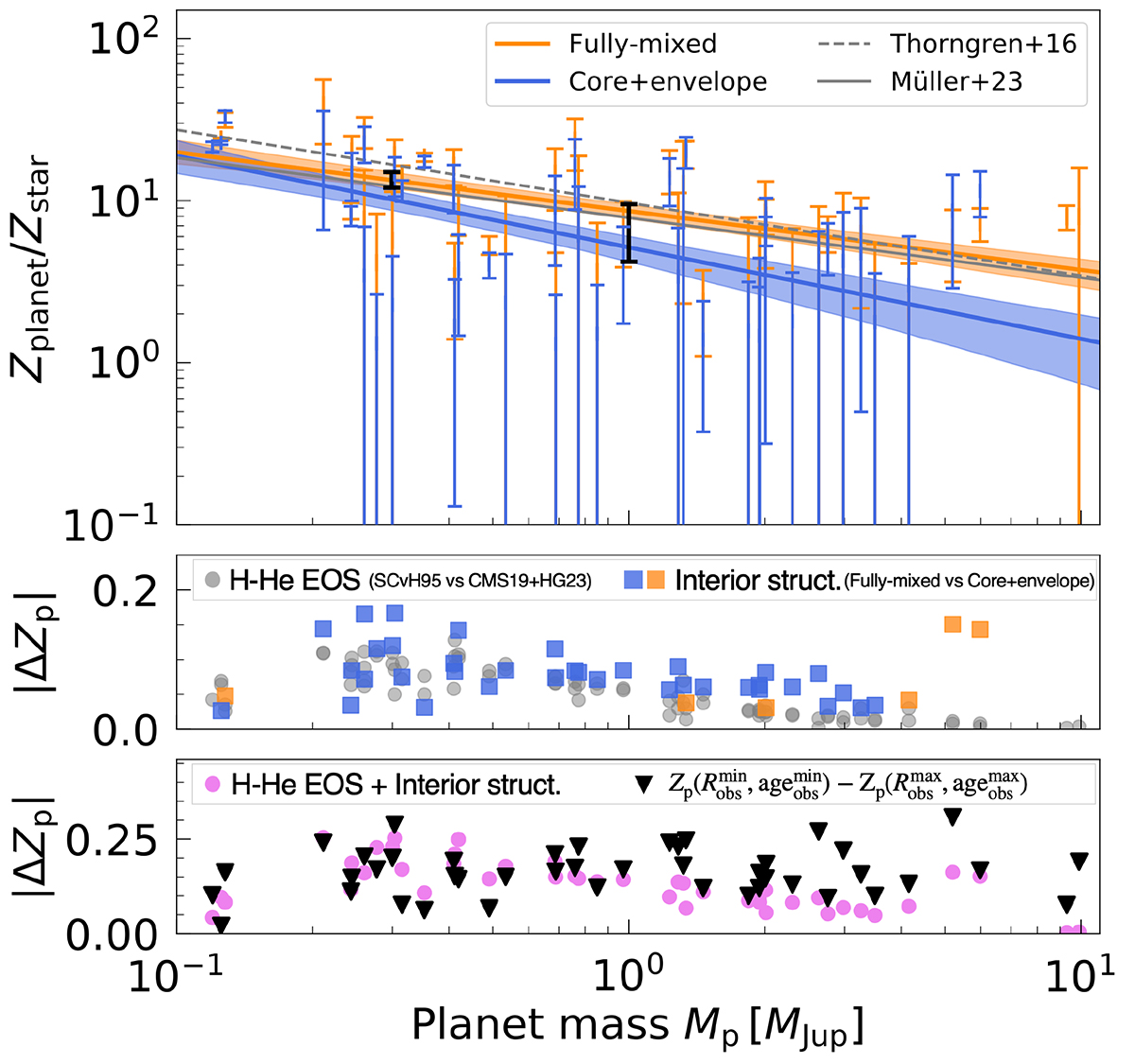Fig. 4.

Download original image
Mass–metallicity relation with both interior structures, using the CMS19+HG23 EOS. Top panel: errorbars show the inferred range of bulk metallicity with the core+envelope (blue) or fully mixed (orange) structure, as in Fig. 3. Orange and blue lines show the best fit for both cases, while the shaded areas show the 1σ error contour. The metallicities of Jupiter and Saturn (Helled & Howard 2024) are shown in black. The solid and dashed grey lines show the best fits from Müller & Helled (2023) and Thorngren et al. (2016), respectively. The star metallicities were derived using the solar value from Asplund et al. (2021). Middle panel: absolute difference in metallicity due to either the H–He EOS (grey dots, taken from Fig. 3) or the interior structure (squares). Blue (orange) squares indicate planets where the core+envelope case gives lower (higher) metallicity than the fully mixed case. Bottom panel: absolute difference in metallicity. Pink dots show the sum of the H–He EOS and the interior structure effects. Black triangles show the range of metallicity inferred from observational uncertainties (radius and age).
Current usage metrics show cumulative count of Article Views (full-text article views including HTML views, PDF and ePub downloads, according to the available data) and Abstracts Views on Vision4Press platform.
Data correspond to usage on the plateform after 2015. The current usage metrics is available 48-96 hours after online publication and is updated daily on week days.
Initial download of the metrics may take a while.


